Pair Of Boots Item Number: E7726A-0 from the National Museum of Natural History
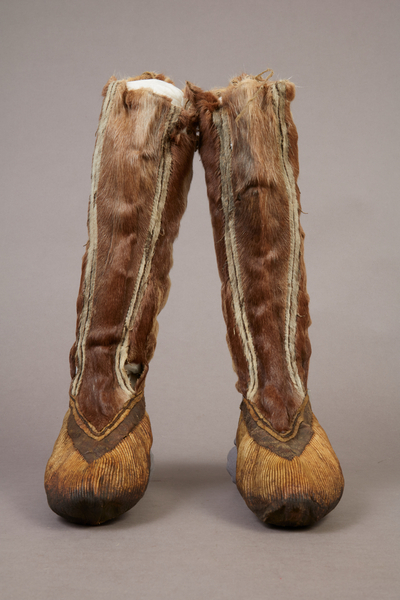
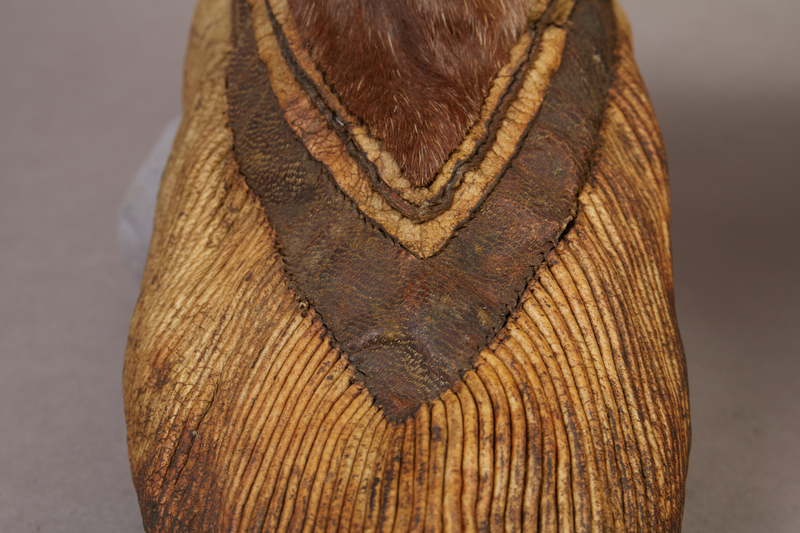
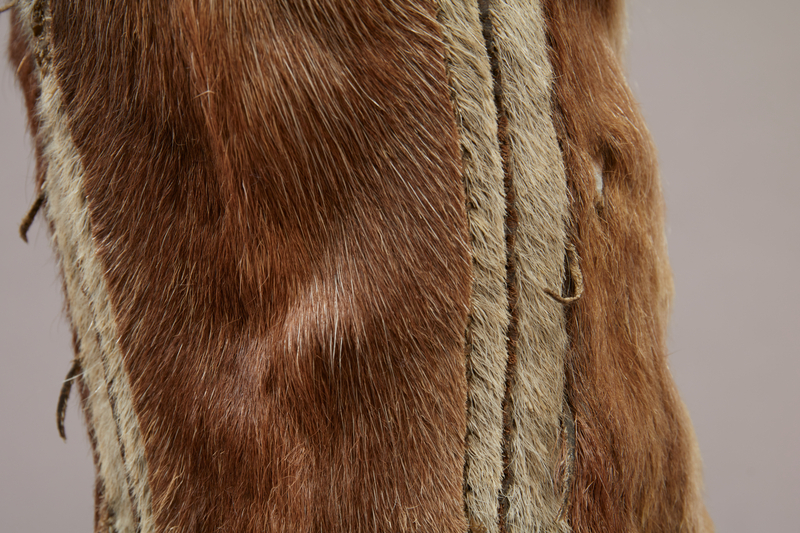
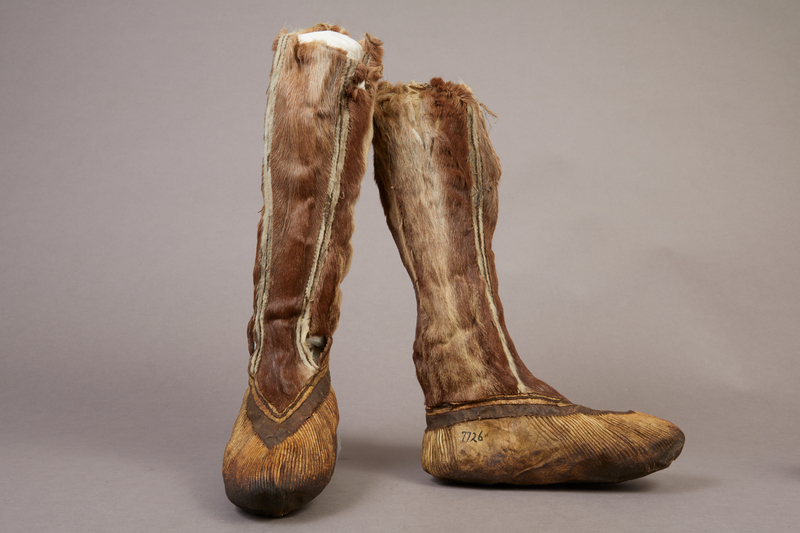
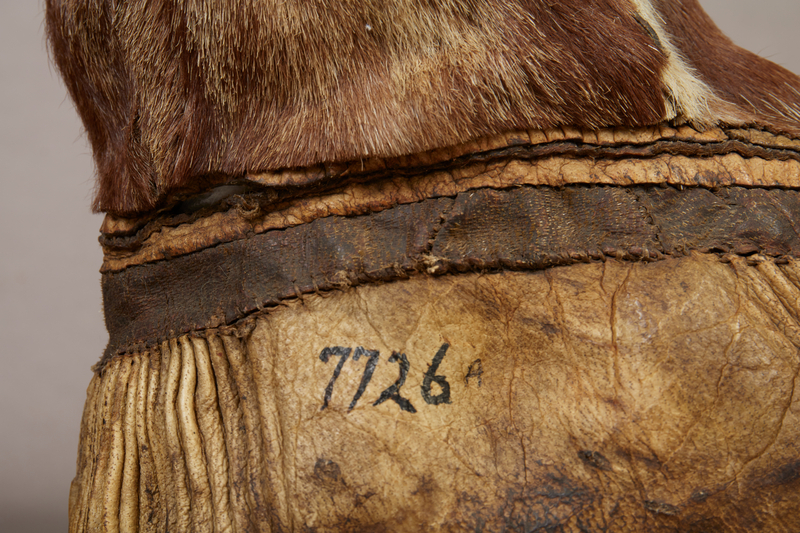
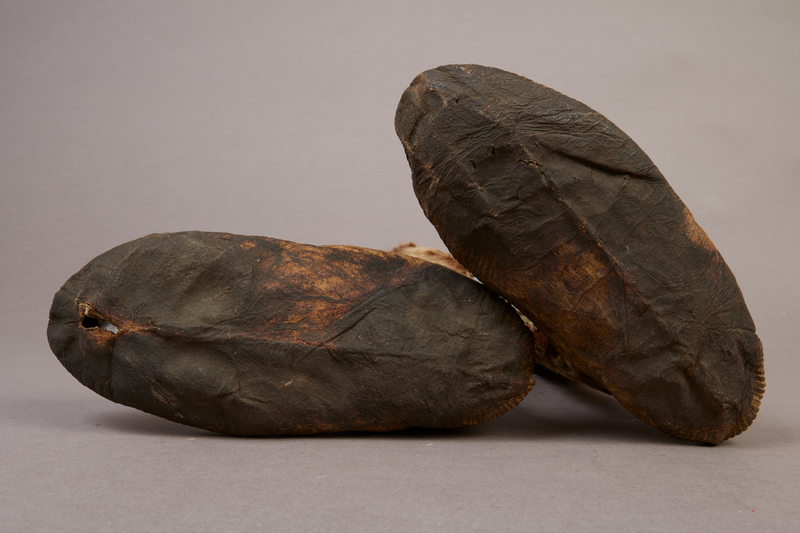

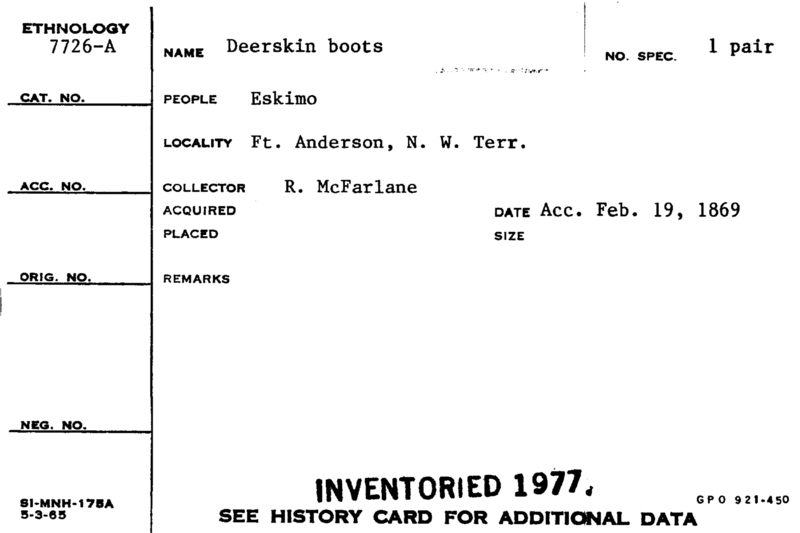
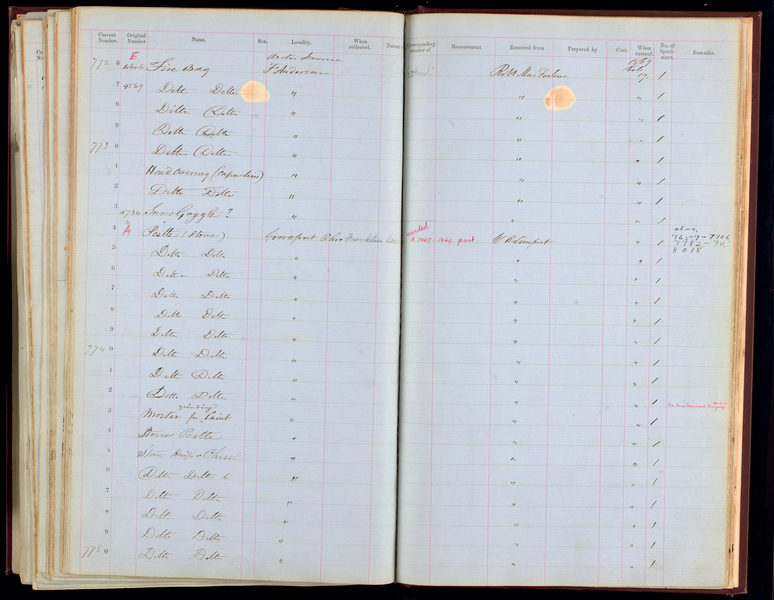

Notes
FROM CARD: "INVENTORIED 1977." Note that these boots are not listed in the ledger book entry for 7726 (which lists only a fire bag, E7726B), but there is a catalog card for the boots 7726A. Presumably, the boots were found later, and a card was made for it, but this was not noted in the ledger. There is also the possibility that the boots were misnumbered / misidentified. It is clearly marked "7725-A" but the ink does not look "old".Source of the information below: Inuvialuit Pitqusiit Inuuniarutait: Inuvialuit Living History, The MacFarlane Collection website, by the Inuvialuit Cultural Resource Centre (ICRC), Inuvik, N.W.T., Canada (website credits here http://www.inuvialuitlivinghistory.ca/posts/12 ), entry on this artifact http://www.inuvialuitlivinghistory.ca/items/59 , retrieved 2-10-2020: A pair of boots made with caribou leg skins and bleached seal hide soles. Pieces of white and dark caribou skin make decorative stripes down both sides of the shins. Numerous small skin tags are sewn in at intervals down the stripes. The pointed soles have dense pleating around the fore portion of the foot and the heel. A pointed vamp made up of strips of dehaired dark and light sealskins joins the leg section and the sole. A casement holds a drawstring around the top of the boot. More information here: http://www.inuvialuitlivinghistory.ca/item_types/23: Warm, dry footwear is essential for survival in the Arctic. The MacFarlane Collection includes examples of knee-length boots known as kamaks, and ankle high moccasin-type footwear. These garments have been skillfully made, and often were decorated by piecing together contrasting pieces of skin. The soles are crimped along the front edges to make the shape conform to the foot.
Item History
- Made in Northwest Territories, Canada
- Collected in Northwest Territories, Canada
- Received from Roderick R. MacFarlane on January 7, 1869
What
- Name
- Pair Of Boots
- Identification Number
- E7726A-0
- Type of Item
- boot
Who
- Culture
- Eskimo, Inuit and Inuvialuk
- Received from
- Roderick R. MacFarlane
Where
- Holding Institution
- National Museum of Natural History
- Made in
- Northwest Territories, Canada
- Collected in
- Northwest Territories, Canada
When
- Acquisition Date
- on January 7, 1869
Other
- Accession Number
- 69A00012